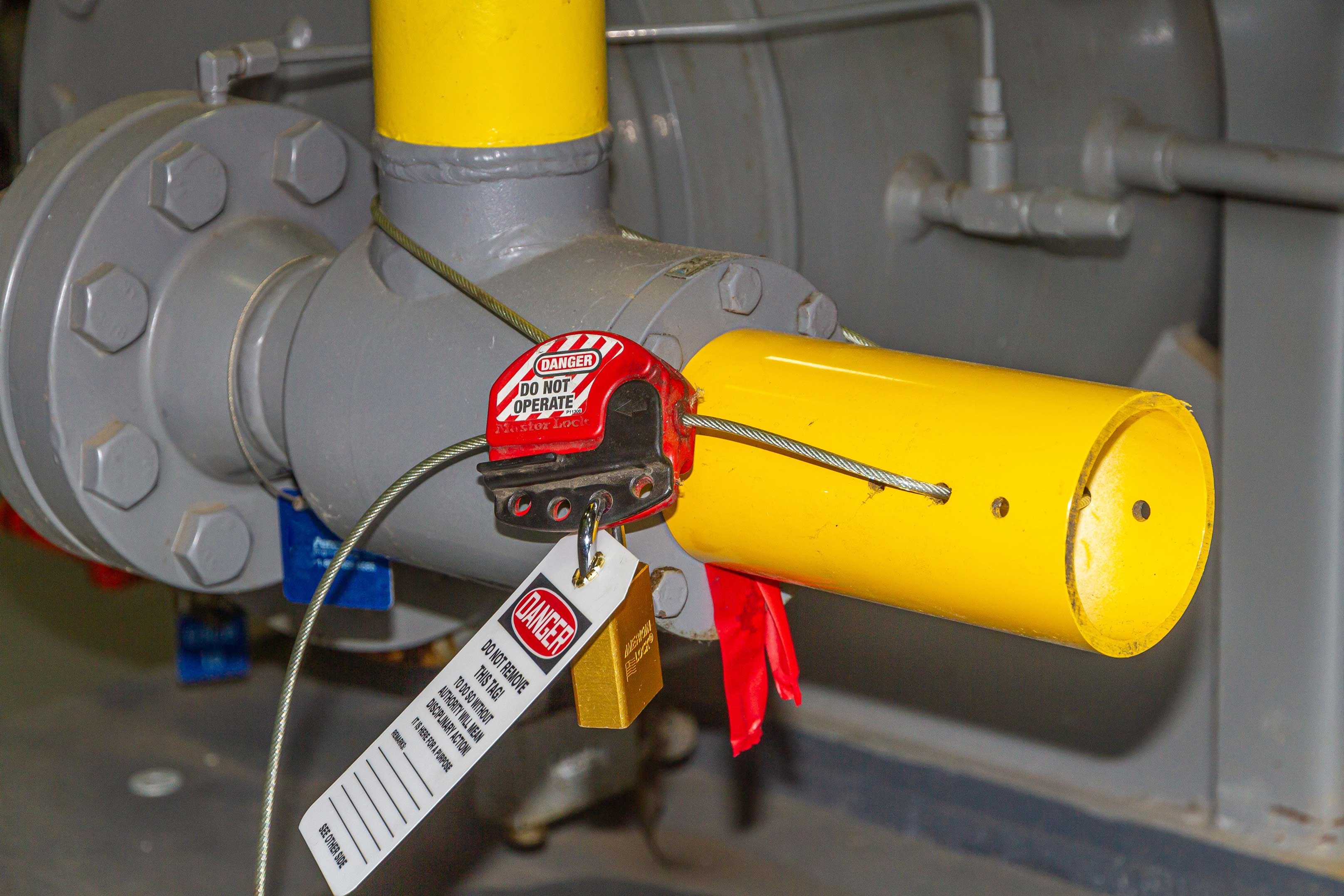

Lockout Tagout Steps for Construction Sites
By Grainger Editorial Staff 6/30/19


Help prevent hazards and control electrical energy at construction sites with this four-step safety plan to an effective LO/TO program.
Construction sites by their very nature are areas of increased risk. Since the construction of a building is literally a work in progress, there are many components on a construction site that are potentially hazardous to both the workers and the general public. Equipment on the site is not permanently anchored, some workers may be unfamiliar with the equipment and their inherent hazards, and written operating instructions and warnings may not be consistently displayed. Add to this the multiple subcontractor workforces that leave their imprint on the site, as well as the occasional onlookers and trespassers, and the potential for danger increases significantly. OSHA has regulations mandating construction site safety, and the failure to comply may result in heavy fines or serious injury.
Regulations governing the locking out and tagging out (LO/TO) of potentially hazardous equipment are of particular concern. Technically, the construction industry is exempt from the Control of Hazardous Energy (LO/TO) OSHA regulation 1910.147. However, Standard 1910.147 does apply to construction companies doing electrical work in their shops or on their own premises.
However, there are OSHA regulations for various Code of Federal Regulations (CFR) 1926 (construction standards) violations requiring that best practices for LO/TO be observed. Following are several OSHA regulations that apply to LO/TO:
- CFR 1926.20 — General safety and health provisions for construction
- CFR 1926.21(b)(2) — Concerning unsafe conditions
- Section 5(A)(1) of the OSHA Act, the General Duty Clause — This can refer to LO/TO on the construction site, as it’s a recognized hazard to which employees are exposed.
- CFR 1926.417 — Safety for exposed wiring
- CFR 1926.403 — The guarding of electrically live parts
Controlling Electrical Energy Onsite
OSHA can also refer to the machinery standard indicating that machines have specific disconnects that can be locked out to enforce safe de-energization work practices on construction sites. A primary concern on construction sites is the control of electrical energy. Typically, power generators are used at the beginning of a construction project. As construction progresses, contractors switch to temporary electrical power, from which they draw their electrical supply needs until they finally switch over to main power. That doesn’t usually occur until the finishing stages of the project. A potential hazard can occur during the timeframe when both main electrical power and residual power (e.g., for emergency lighting) are live. There are separate breakers for main electrical and residual power. Both sources of electrical power need to be locked out and tested for safety before performing any equipment servicing/maintenance work. Additionally, generators must be tagged out for non-use and “needs repair” conditions. Not doing this can lead to a serious accident if the generator is energized.
Another common electrical hazard on a construction site is the potential to hit live wires while excavating. It is possible that old utility lines can still be energized. It is important to verify the location of all electrical lines on the site and make sure that they are not live in the area that is being excavated.
4-Step Plan to an Effective LO/TO Program
What measures can be put in place to help reduce the potential for accidents and injury on a construction site? By implementing the following 4-Step Plan, contractors will be following best practices for controlling energy.
STEP 1: Develop and document an energy control program with written procedures.
A written lockout policy is the starting point. With respect to who is responsible for providing written procedures on a construction site, it depends upon how the project contract is written. It could be the general contractor, construction manager or electrical contractor. If the electrical contractor has to verify successful isolation and/or control of the hazardous electrical energy, that party is usually the only one who can perform the lockout. (It’s generally standard operating procedure to have the electrical contractor perform the lockout.) The procedures to be followed and the person responsible for implementing safety measures should be determined at the preconstruction conference.
After determining who is responsible for writing an energy control program, begin by documenting the program. Continue with machine-specific procedure development, training and periodic inspections. OSHA has a Lockout/Tagout Tutorial on its website, www.osha.gov, that provides additional advice. There are programs on the market, that include a thorough sample energy control policy that can serve as a guide as you develop your own comprehensive energy control program. Lockout Pro also allows you to create and manage clear and easy-to-follow visual, machine-specific procedures for most electrical equipment.
STEP 2: Identify and mark all energy control points.
Locate and mark all energy control points, including valves, switches, breakers and plugs, with permanently placed labels or tags. It is important to use labels and tags made of durable materials to withstand exposure to the elements on a construction site. Cross-reference each label and tag with the corresponding step number in the posted energy control procedure for that equipment. Include information about the magnitude and purpose of the control point as stipulated by OSHA for electrical disconnects and recommended by ANSI for all isolating devices.
STEP 3: Train employees, communicate procedures and conduct periodic inspections.
It is important to establish formal training programs for each of the three categories of employees for lockout: “Authorized,” “Affected” and “Other” employees. OSHA provides advice on how to train for electrical safety. You must verify that your training is up to date. You can create or enhance a training program by using some of the training DVDs, handbooks and posters that are currently available. There is also software available that provides training modules and quizzes to help formalize and document effective training programs.
STEP 4: Equip employees with the proper lockout tools and warning devices.
Ultimately, it’s the proper and consistent application of the lockout hardware per established procedures that makes a successful lockout program. To this end, it’s very important to know and document specifically what devices are acceptable for use at each and every lockout point. There is a tremendous range of sizes and shapes of valve operating handles, circuit breaker switches and various other energy control means. A leading lockout device provider will have developed product series that properly fit the majority of these. Because a construction site is more of an uncontrolled environment than an occupied building or plant, there is a greater safety risk for both authorized and unauthorized personnel. Using heavy-duty padlocks to lock all equipment when not in use and displaying visual warning signs that communicate hazards to workers and the general public will also help to reduce accidents.
Consistently following the four steps listed above will help contractors adhere to best practices for compliance with OSHA safety regulations regarding energy control on a construction site. This will result in increased personal safety, cost reductions and improved productivity.
Article courtesy of Brady Corporation.![]()
The information contained in this article is intended for general information purposes only and is based on information available as of the initial date of publication. No representation is made that the information or references are complete or remain current. This article is not a substitute for review of current applicable government regulations, industry standards, or other standards specific to your business and/or activities and should not be construed as legal advice or opinion. Readers with specific questions should refer to the applicable standards or consult with an attorney.







